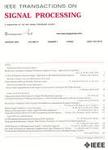版权所有:内蒙古大学图书馆 技术提供:维普资讯• 智图
内蒙古自治区呼和浩特市赛罕区大学西街235号 邮编: 010021

作者机构:Univ Claude Bernard Univ Lyon ENS Lyon CNRSLab Phys F-69342 Lyon France Univ Toulouse CNRS UMR 5505 IRIT F-31000 Toulouse France Univ Paris Est Lab Anal & Math Appl CNRS UMR 8050 UPEC F-94010 Creteil France Stellenbosch Univ Natl Inst Theoret Phys NITheP ZA-7600 Stellenbosch South Africa Stellenbosch Univ Dept Phys ZA-7600 Stellenbosch South Africa
出 版 物:《IEEE TRANSACTIONS ON SIGNAL PROCESSING》 (IEEE信号处理汇刊)
年 卷 期:2019年第67卷第1期
页 面:110-119页
核心收录:
基 金:ANR-16-CE33-0020
主 题:Multifractal analysis nonconcave multifractal spectrum wavelet leaders Legendre transform generalized canonical ensemble
摘 要:Multifractal analysis has become a powerful signal processing tool that characterizes signals or images via the fluctuations of their pointwise regularity, quantified theoretically by the so-called multifractal spectrum. The practical estimation of the multifractal spectrum fundamentally relies on exploiting the scale dependence of statistical properties of appropriate multiscale quantities, such as wavelet leaders, that can be robustly computed from discrete data. Despite successes of multifractal analysis in various real-world applications, current estimation procedures remain essentially limited to providing concave upper-bound estimates, while there is a priori no reason for the multifractal spectrum to be a concave function. This paper addresses this severe practical limitation and proposes a novel formalism for multifractal analysis that enables nonconcave multifractal spectra to be estimated in a stable way. The key contributions reside in the development and theoretical study of a generalized multifractal formalism to assess the multiscale statistics of wavelet leaders, and in devising a practical algorithm that permits this formalism to be applied to real-world data, allowing for the estimation of nonconcave multifractal spectra. Numerical experiments are conducted on several synthetic multifractal processes as well as on a real-world remote-sensing image and demonstrate the benefits of the proposed multifractal formalism over the state of the art.